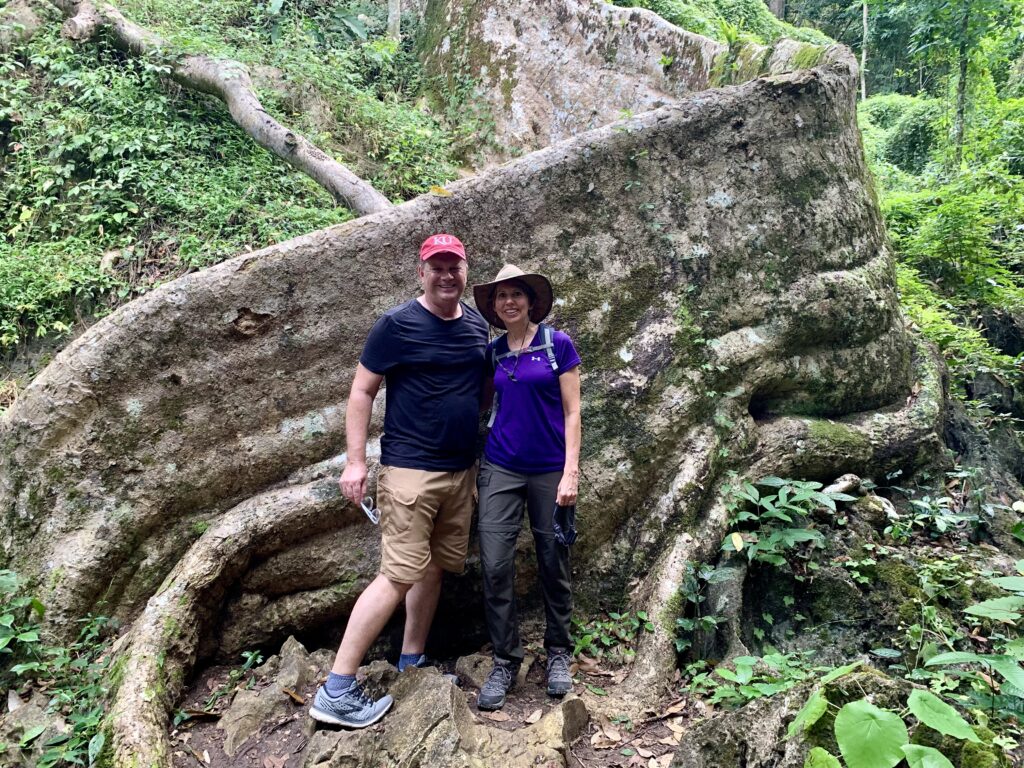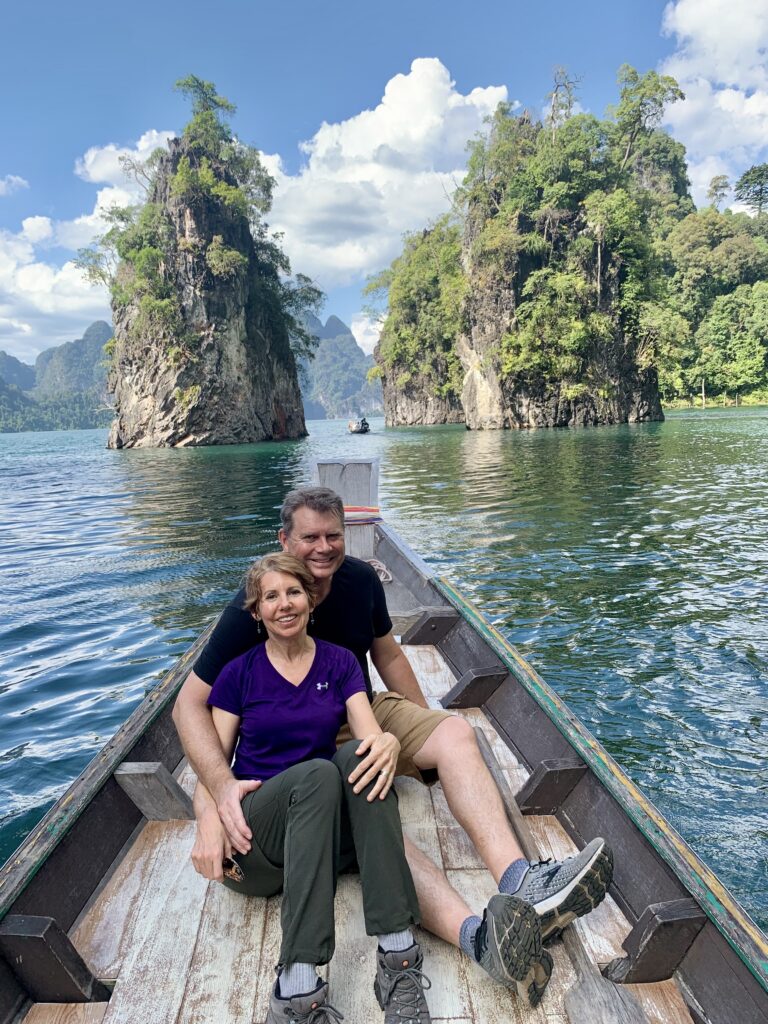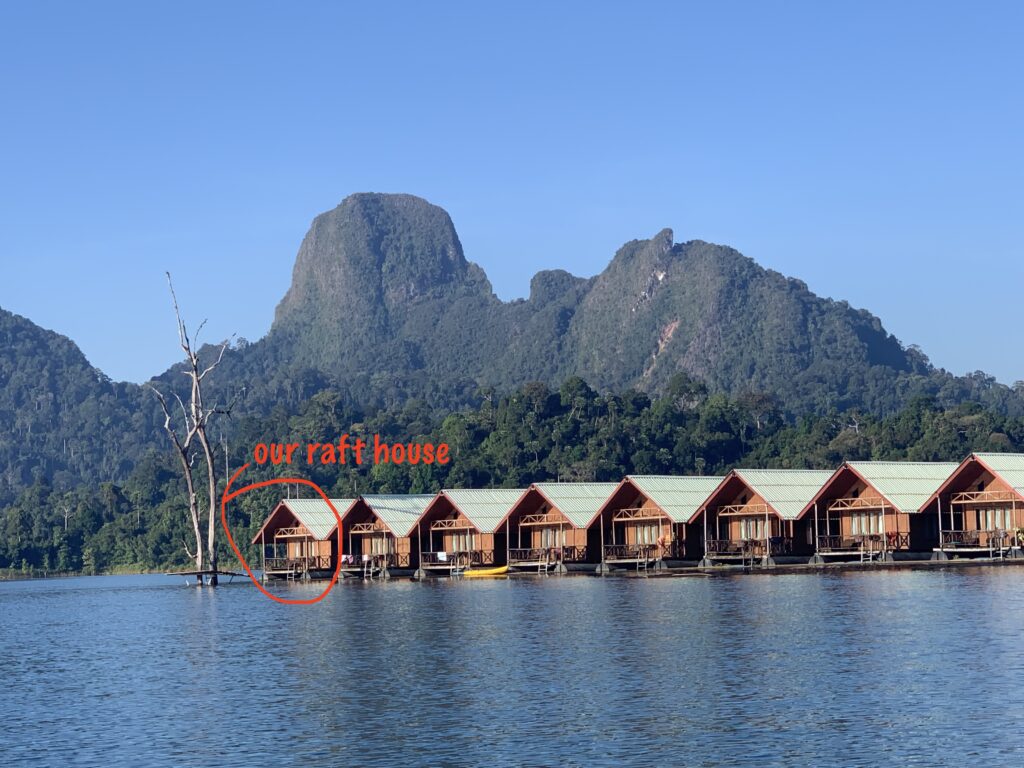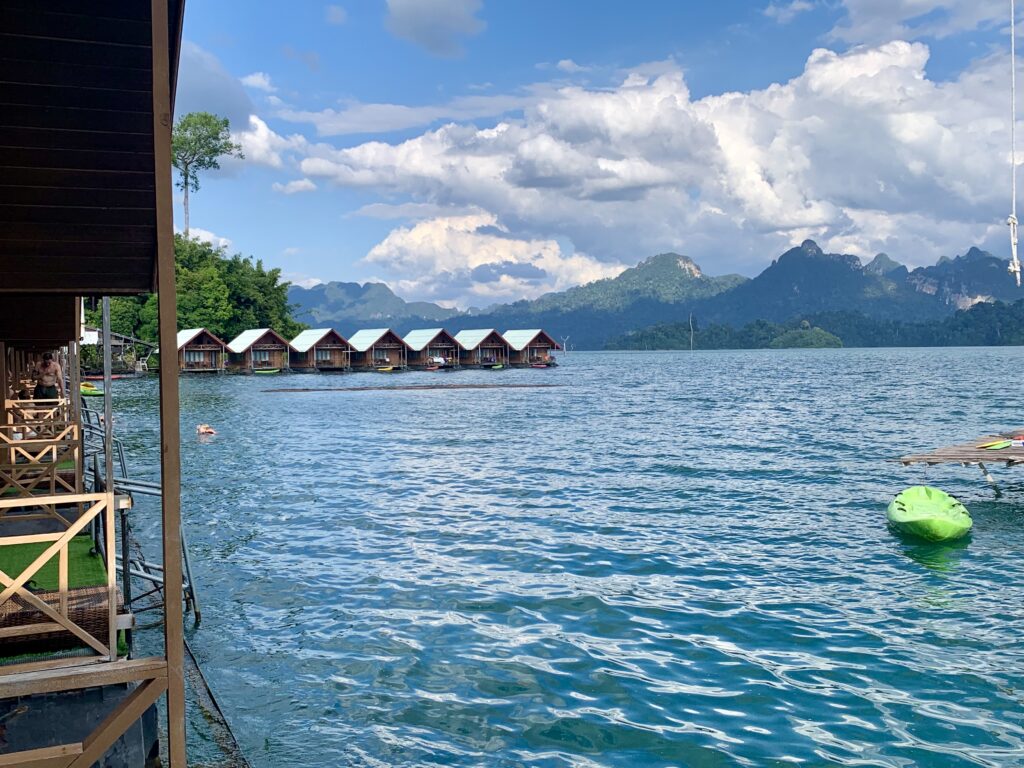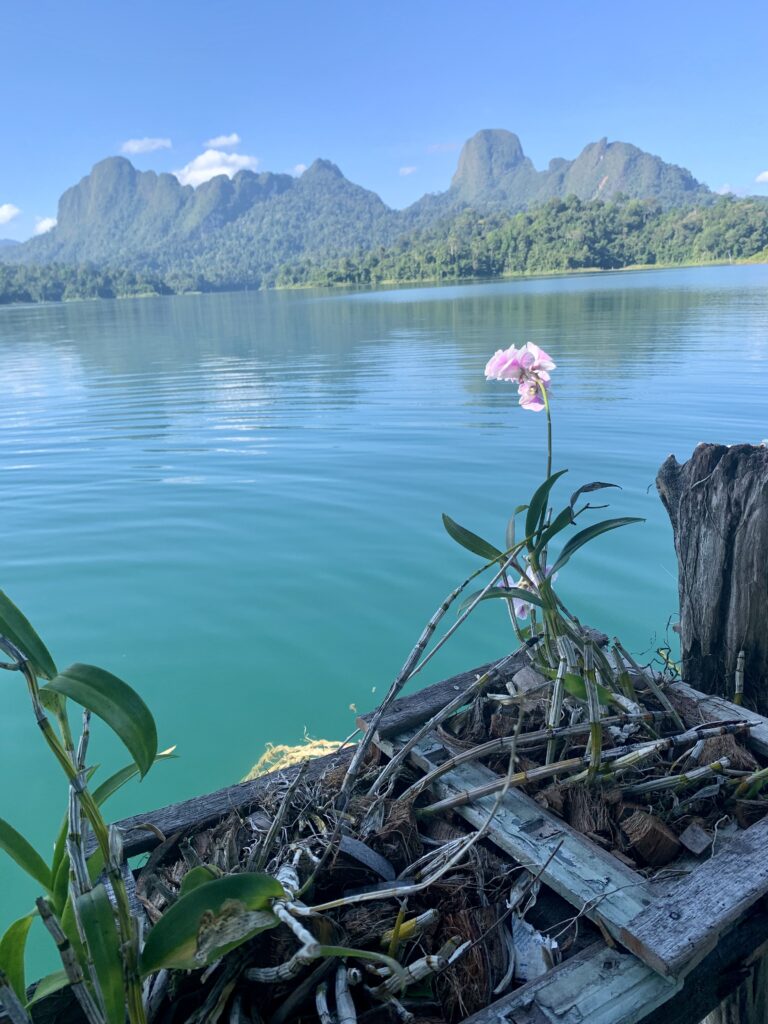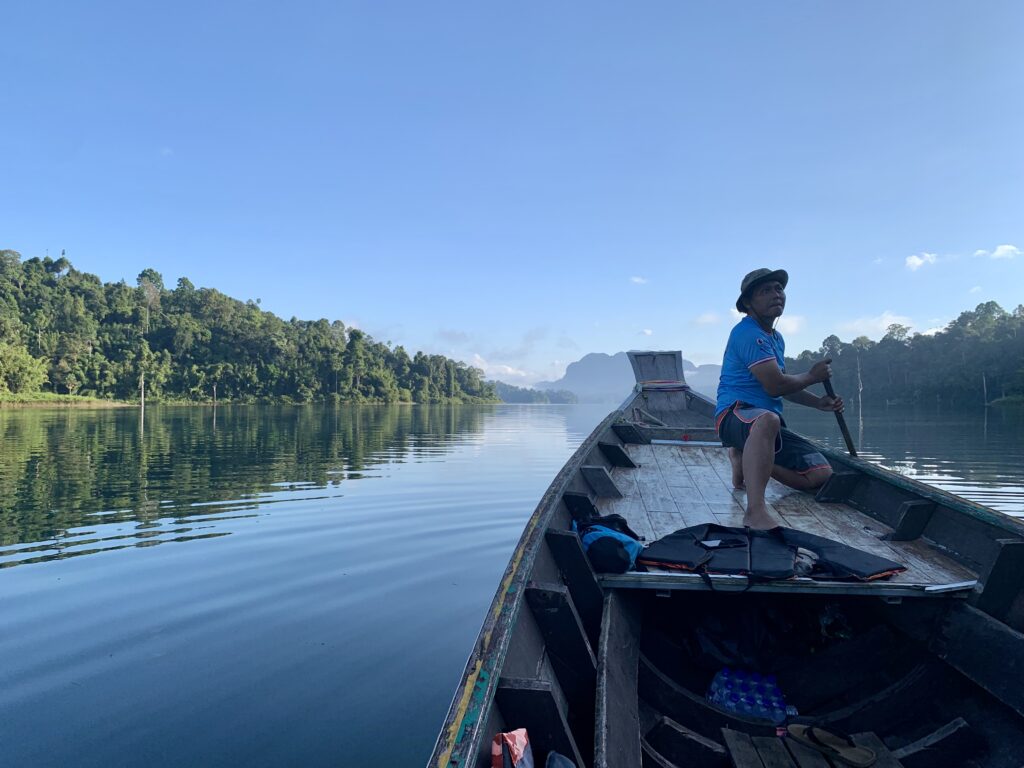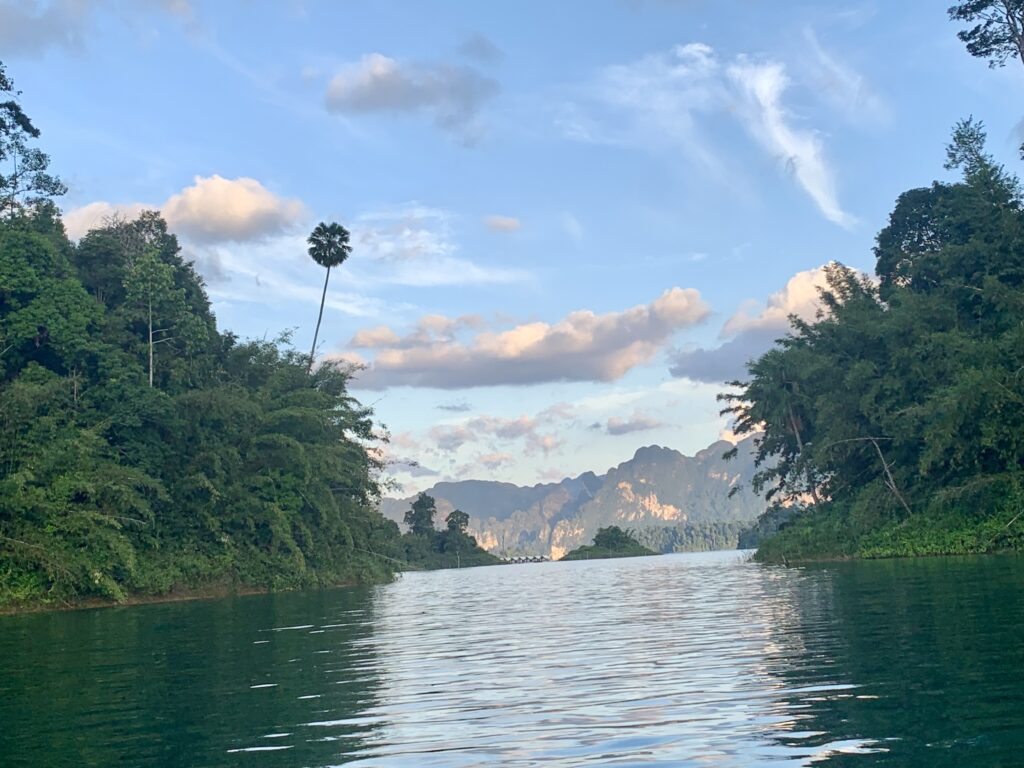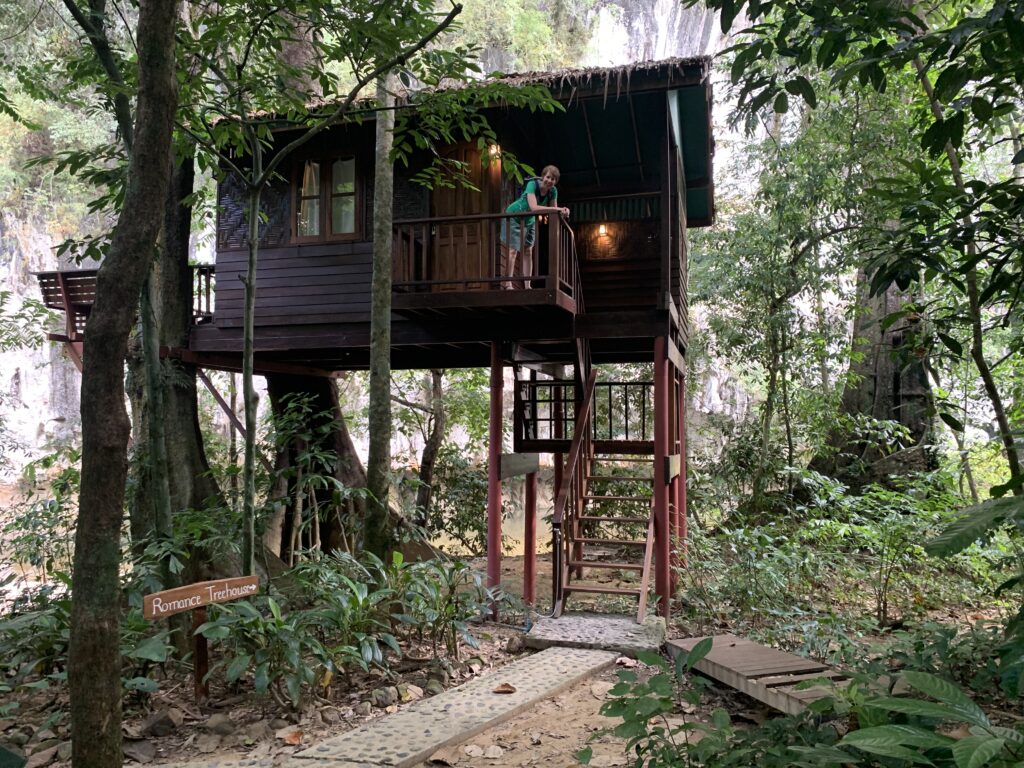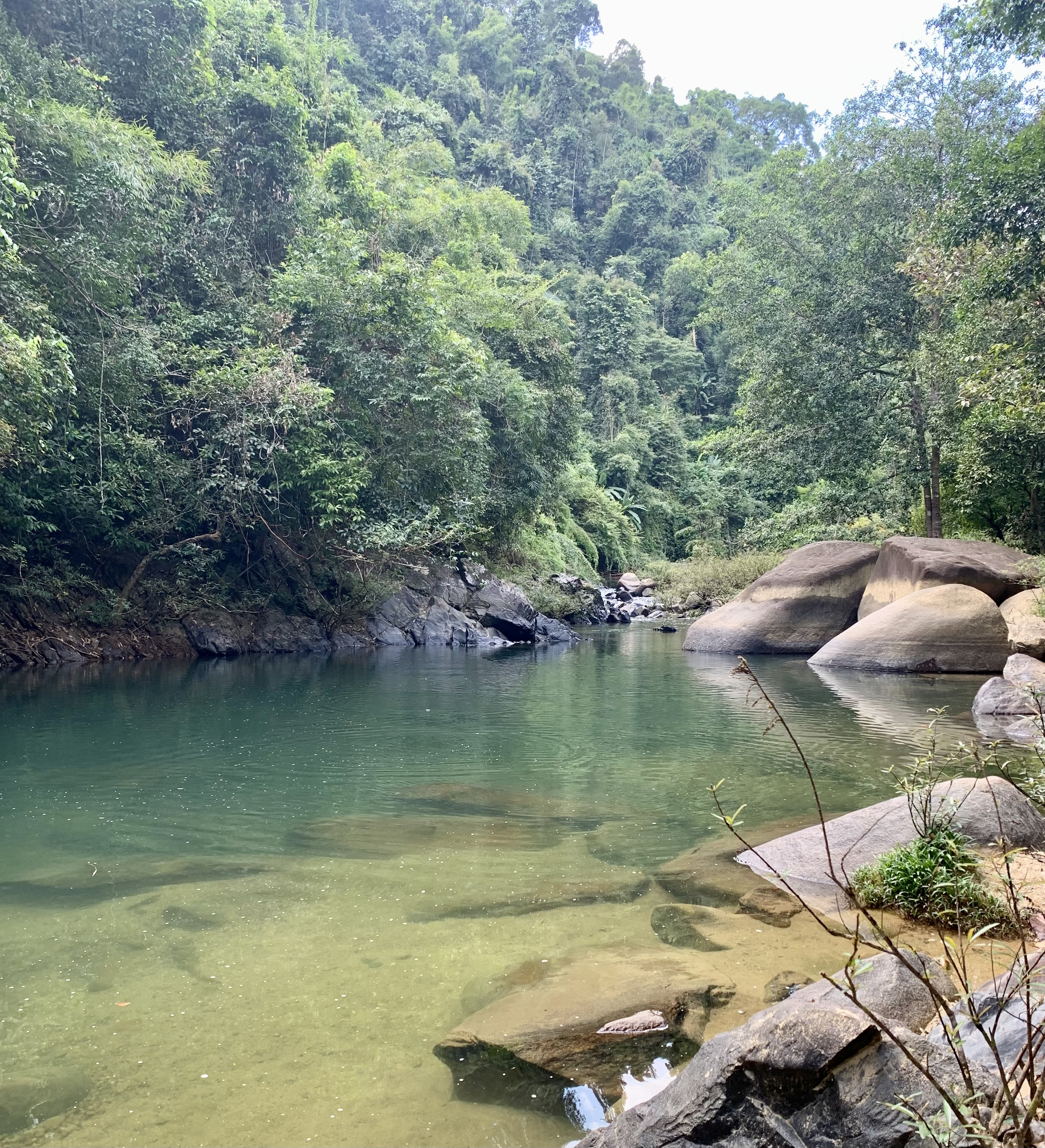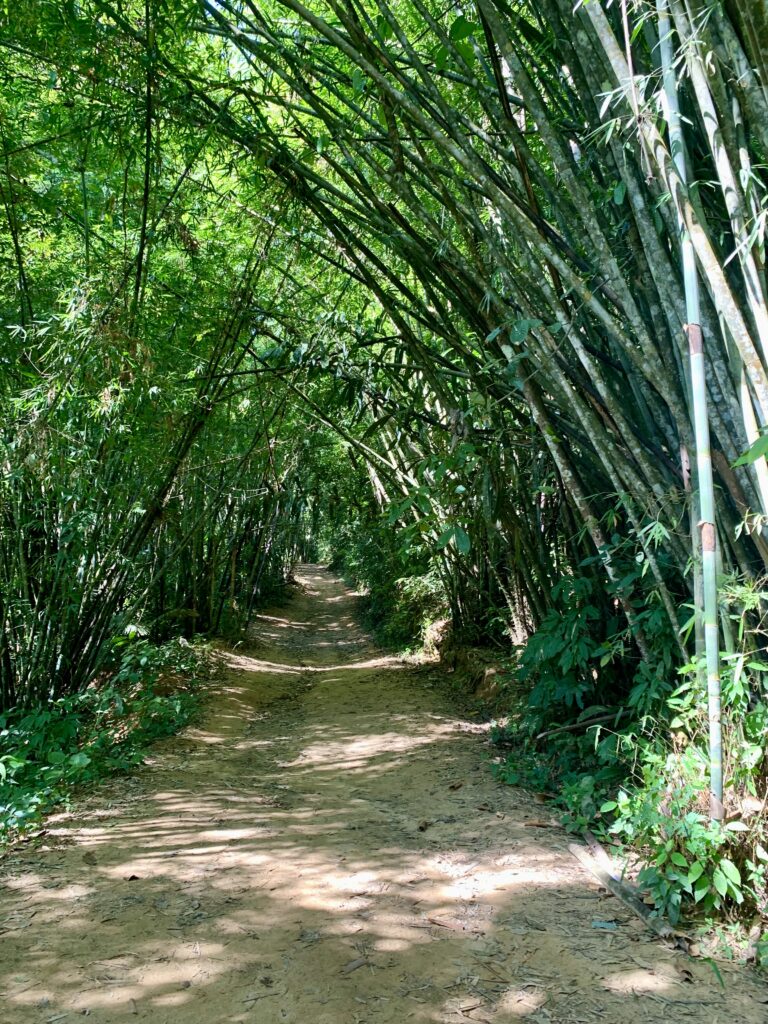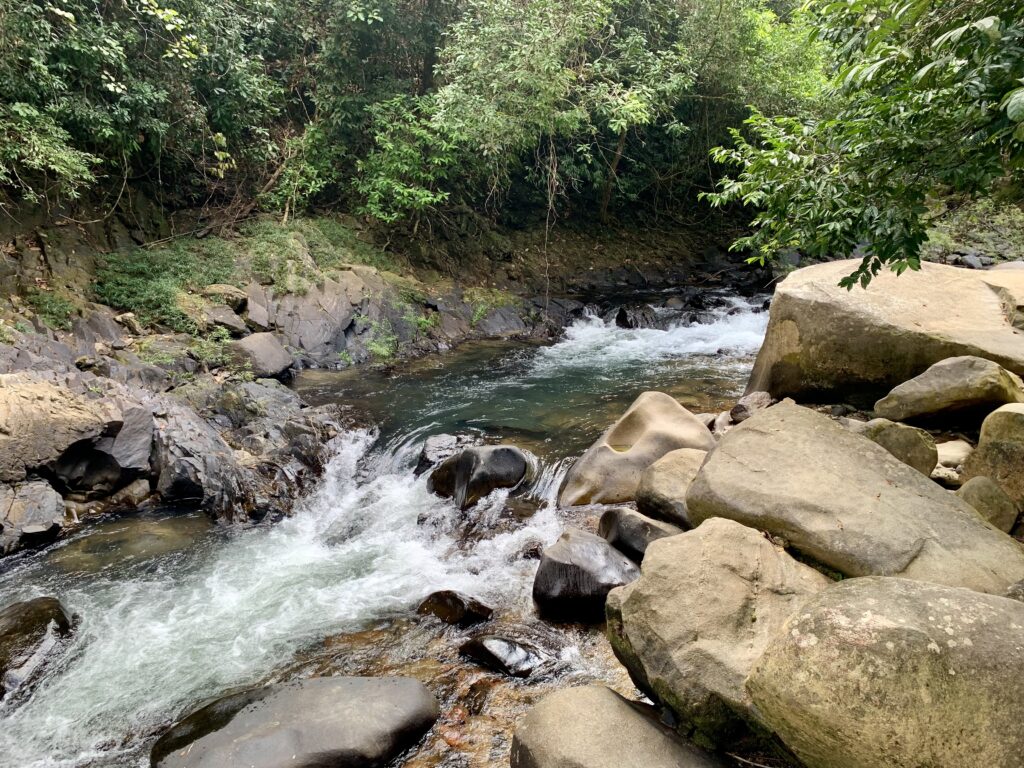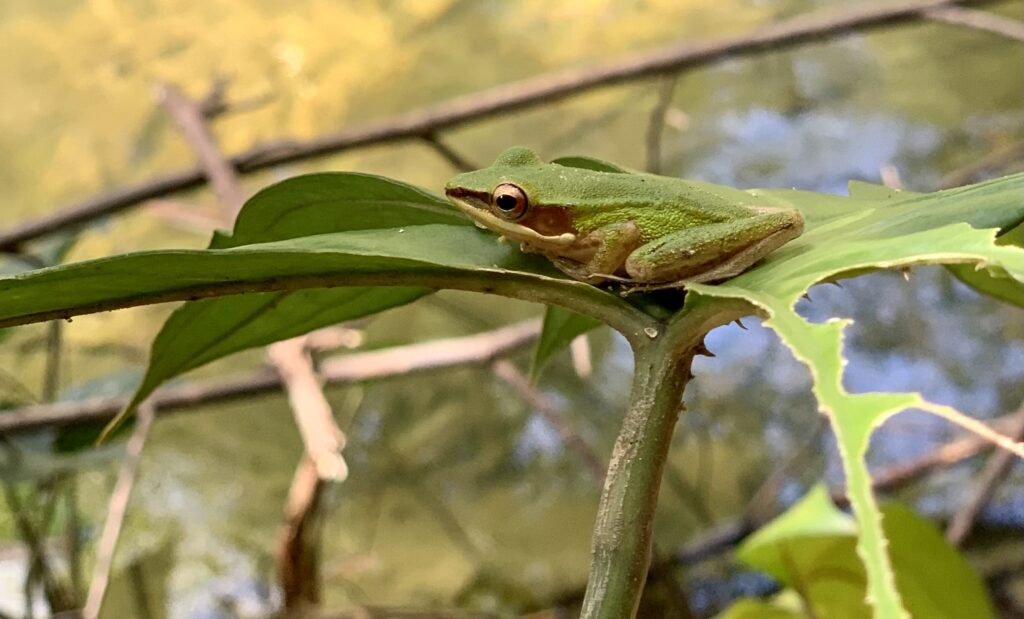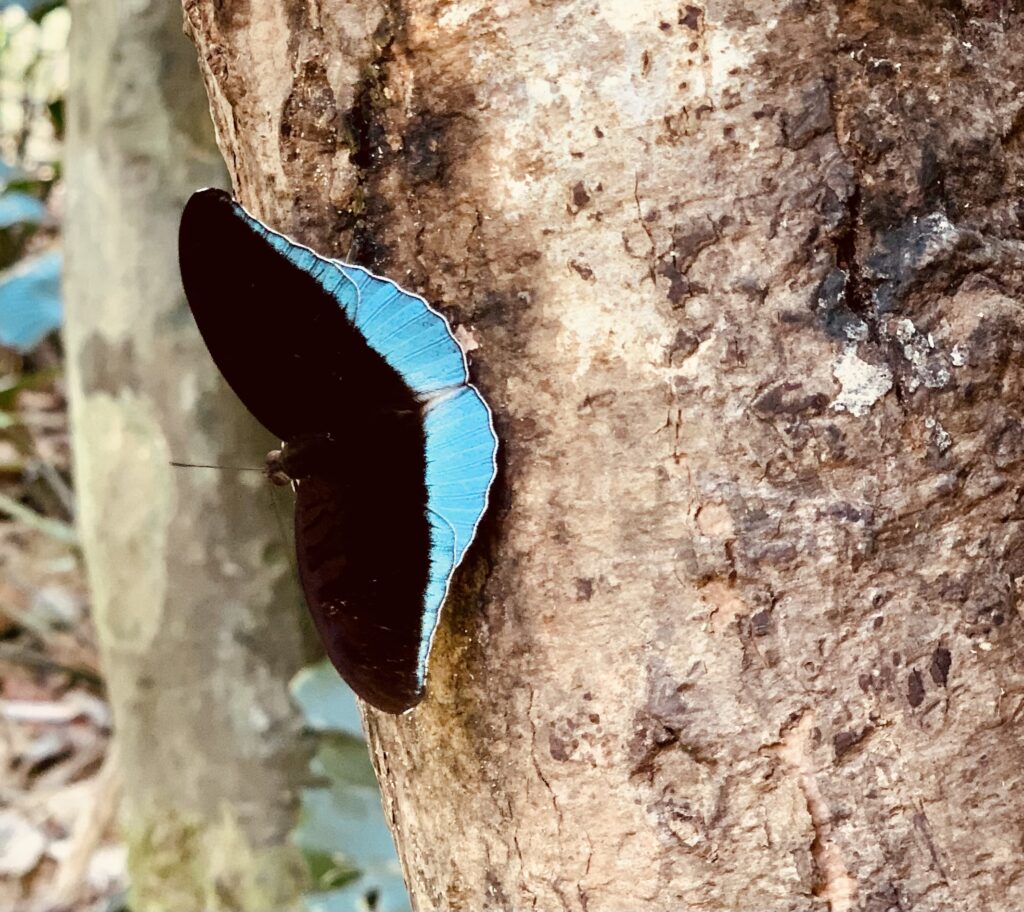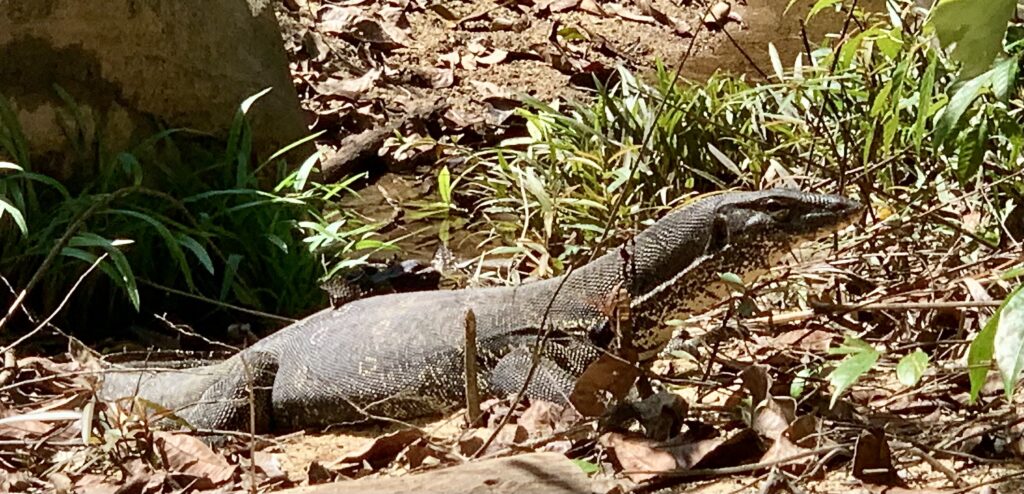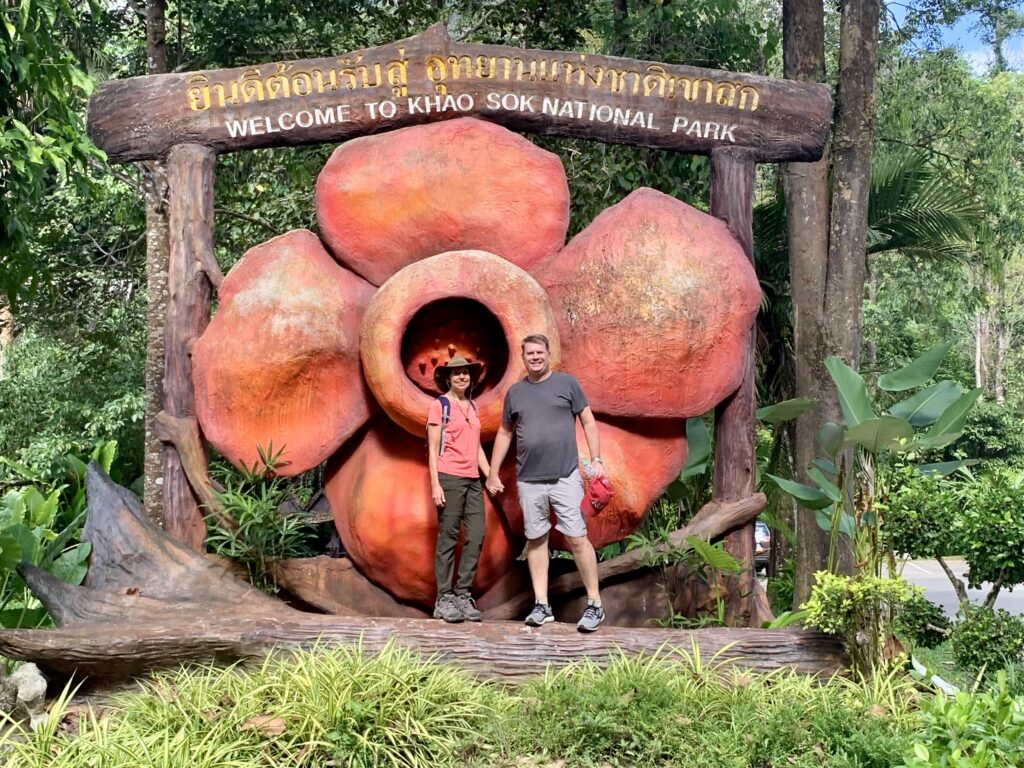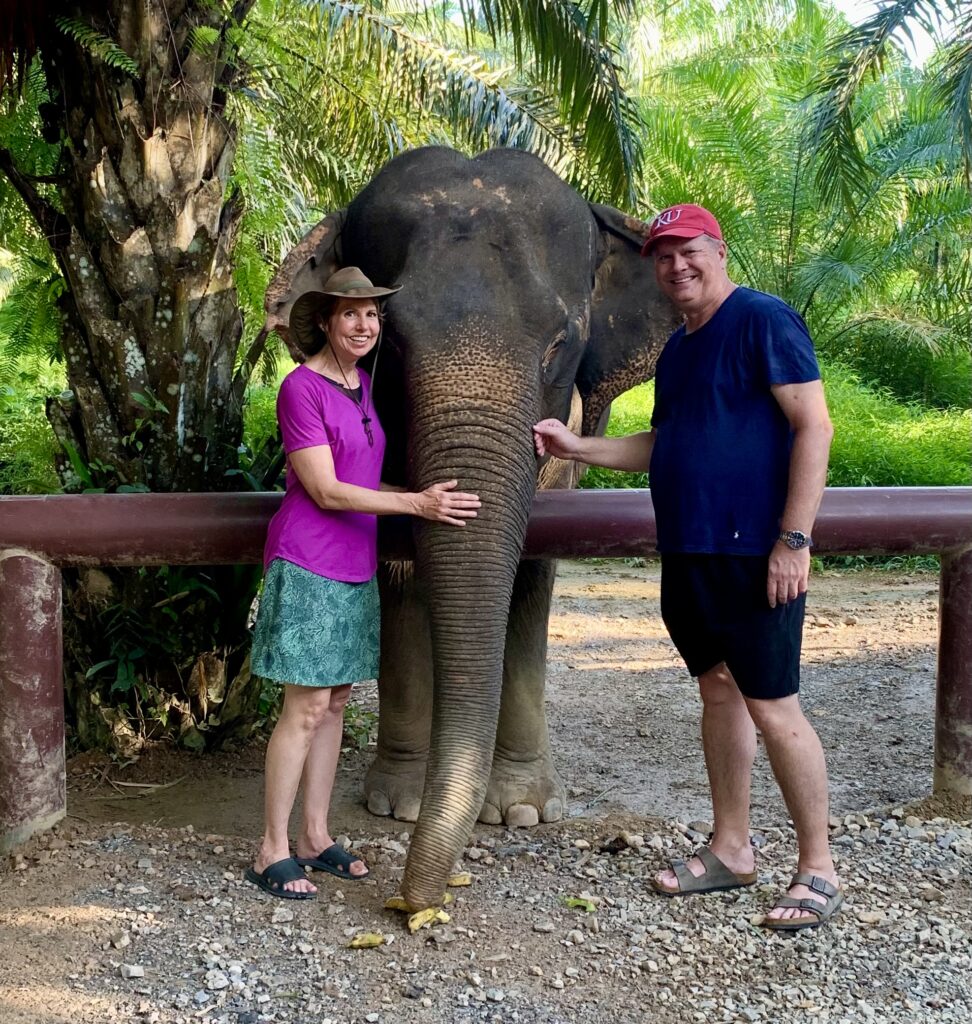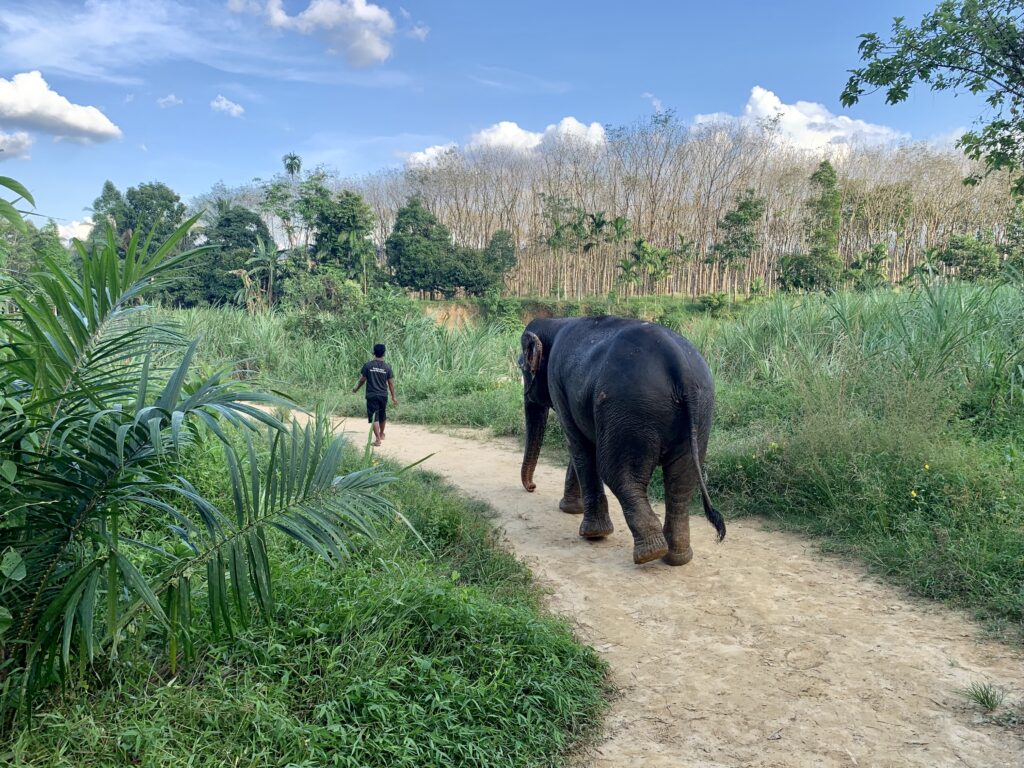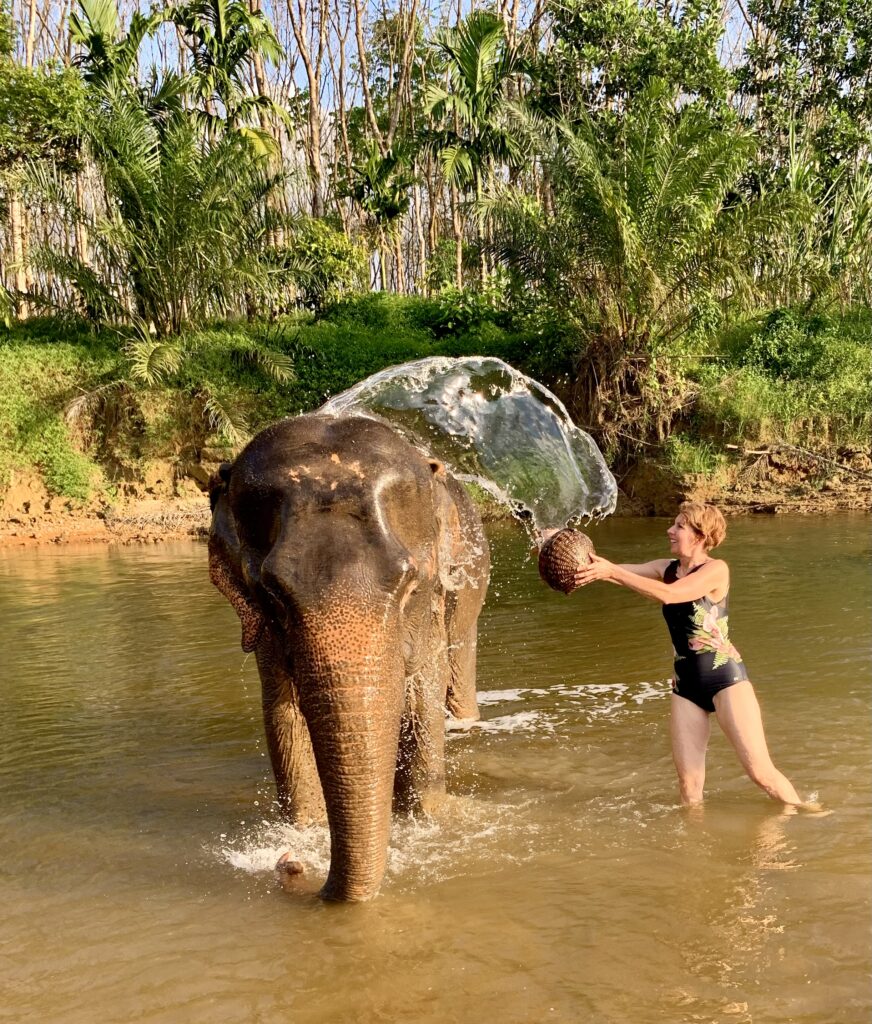A five-hour speed boat ride delivered us to an island paradise about as far south as you can go in Thailand. Koh Lipe’s clear turquoise water and white sand beaches didn’t disappoint (at first).
Our poolside room at the Mali Sunrise Resort was huge, and it was just a few steps to the beach, where the hotel’s restaurant served up fantastic food and delicious happy hour cocktails.
We quickly discovered the route to “Walking Street,” a paved road that connected our side of the island with another popular area, Pattaya Beach, and featured shops, restaurants, bars, and massage parlors. Although cars were prohibited, there was no shortage of motorbikes and a creative type of taxi: a motorbike with a large sidecar attachment with bench seating. Frankly, it was a little too chaotic for us, so we generally hunkered down at our resort.
One day, we took a long-tail boat to the neighboring island, Koh Adang, which is the second biggest island in the Tarutao National Marine Park. Bigger than Koh Lipe, it remains undeveloped except for a campsite and a few bungalows operated by the park. I had read about a hiking trail, so we set off, following the sign to Chado Cliff. I had no idea the “trail” would be quite so steep and treacherous. I loved it! We hiked to three viewpoints. The third offered an incredible view of Koh Lipe.
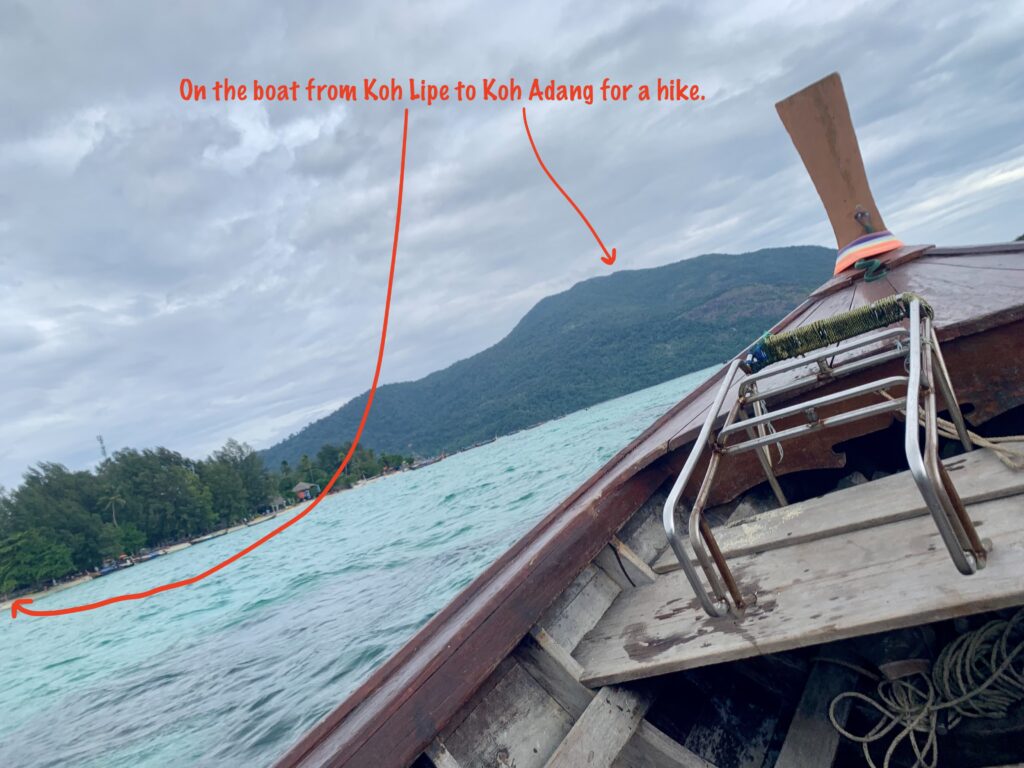
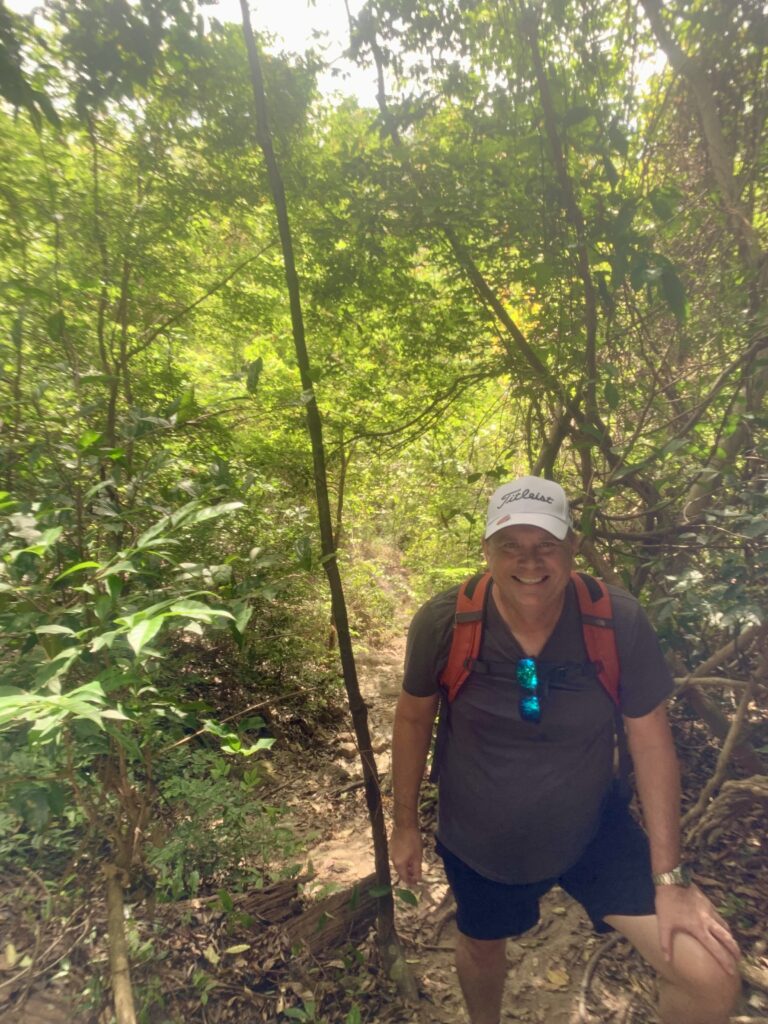
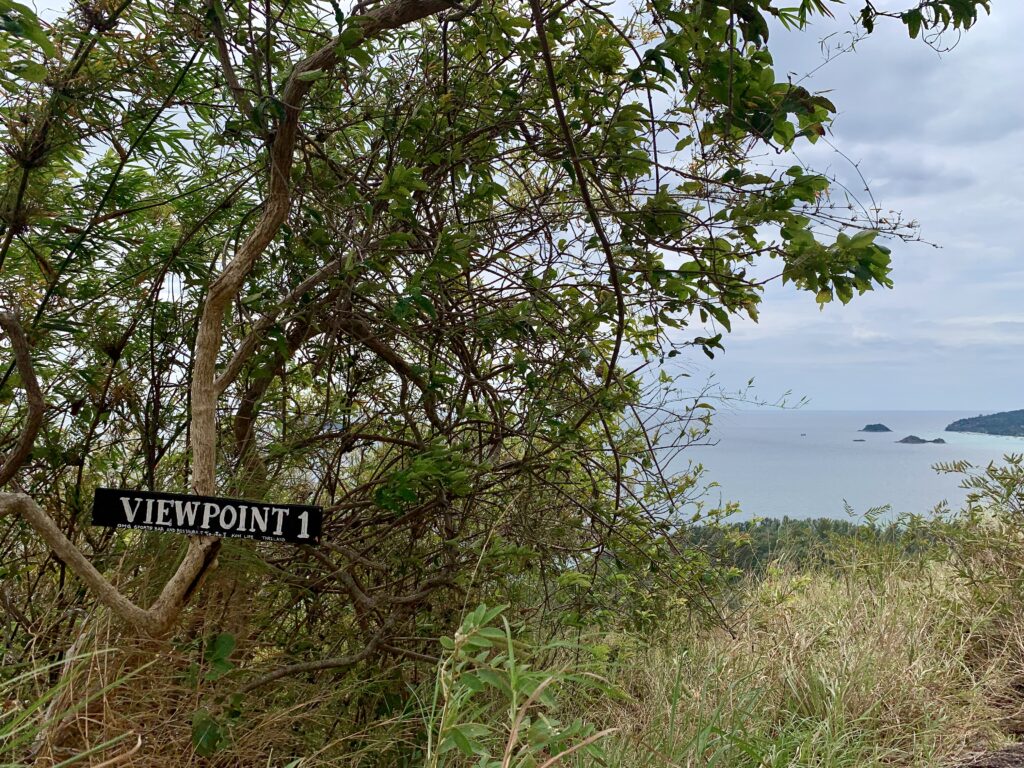
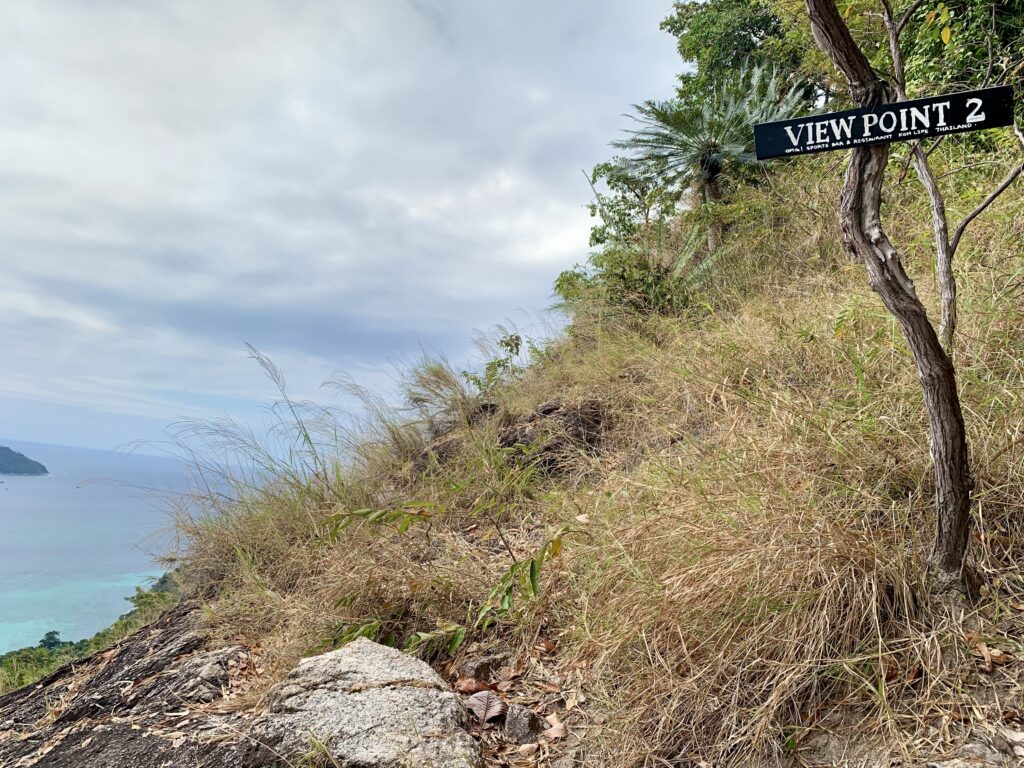
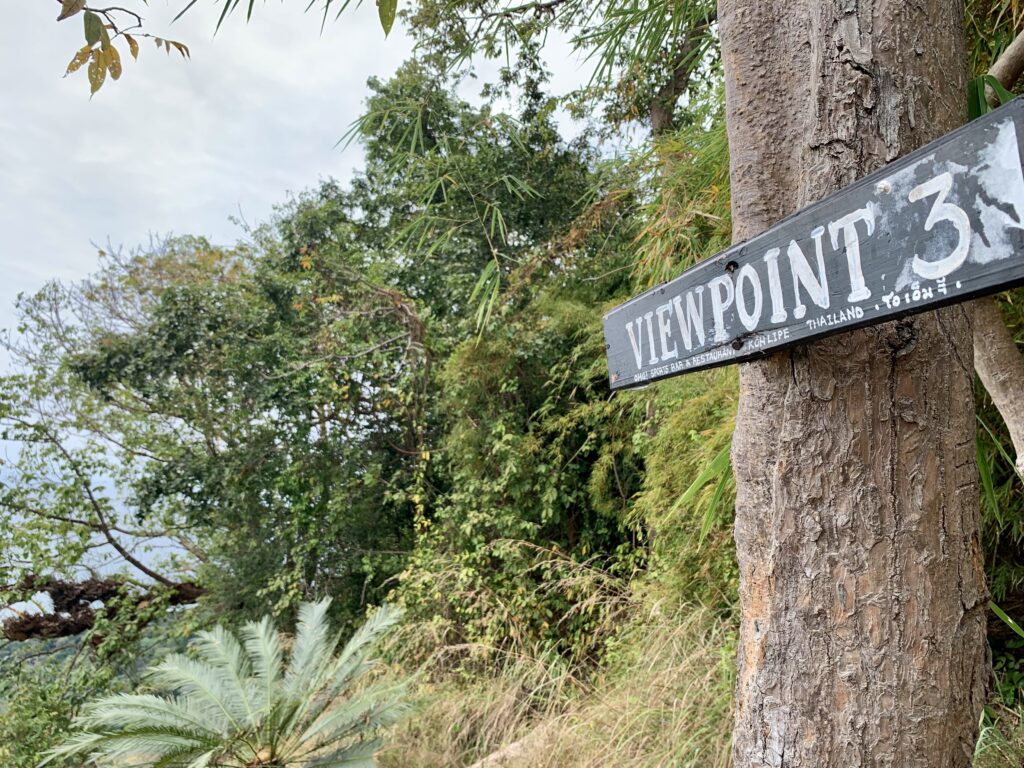
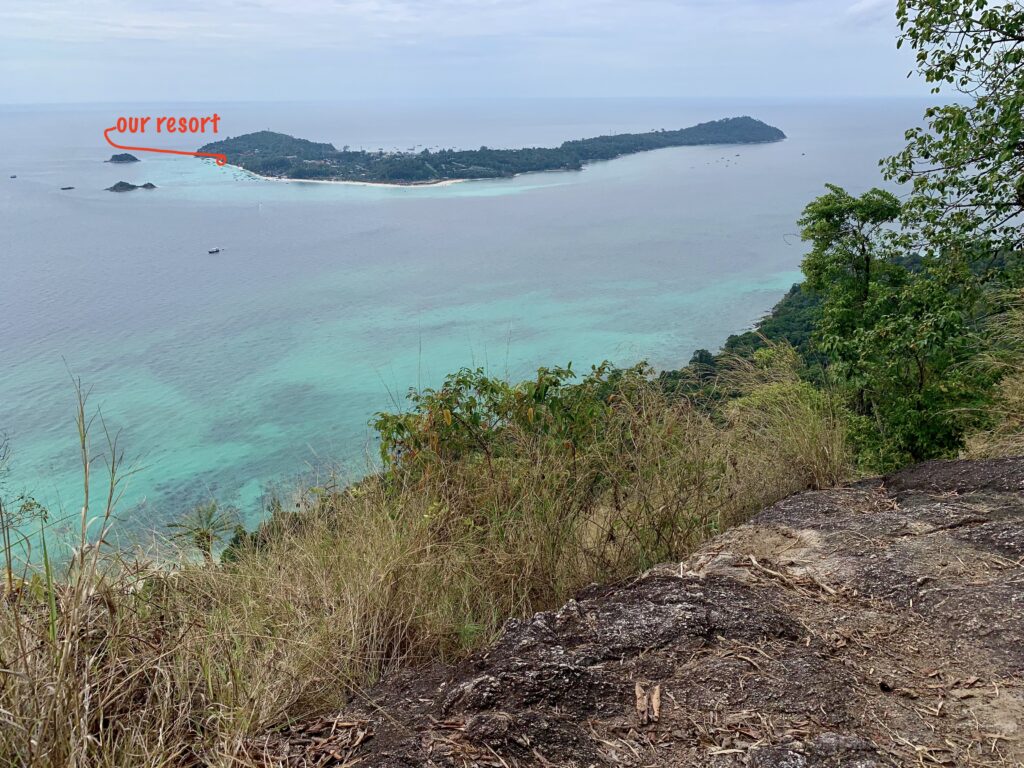
On the way back down, we caught up with a young couple who were taking forever to descend. We kept pausing to let them get ahead, but honestly, it was torture watching the man struggling so much. I snarkily commented to Tony that the stupid guy was hiking in Keen sandals, which clearly didn’t have enough tread. As if the universe reached out to slap me for being mean, I promptly slid on some loose sand and fell smack on my back. Other than a few scrapes and a bruised ego, I was fine.
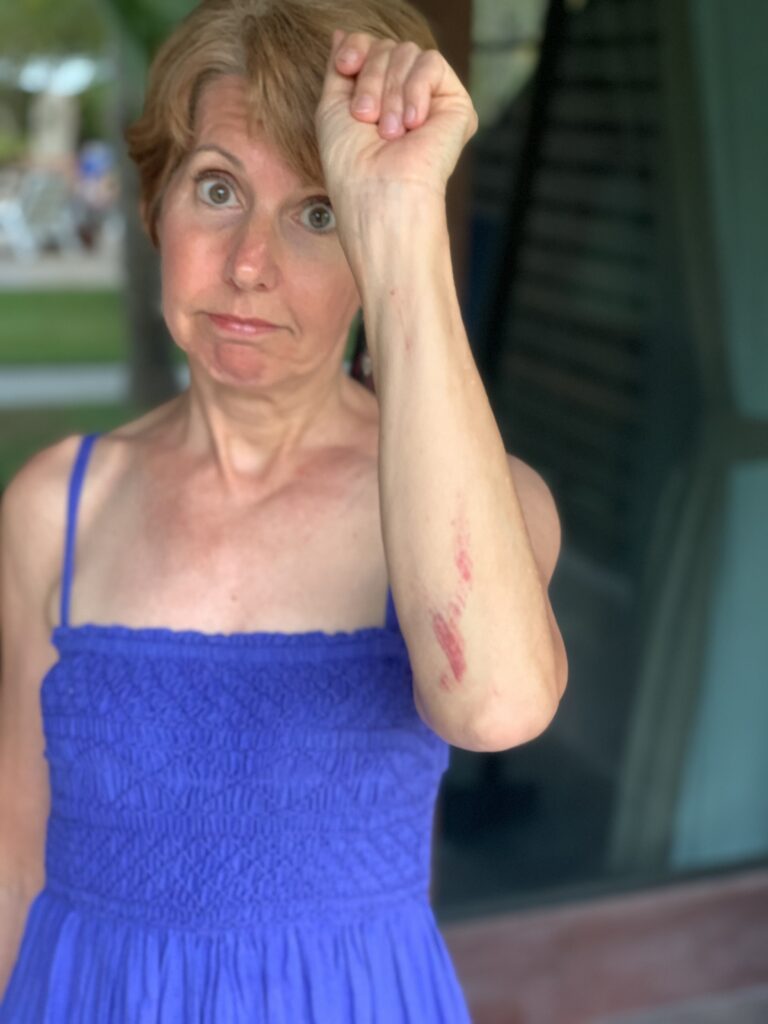
Safe at the bottom of the hill, Tony and I high-fived. Look at us, pushing 60 and kicking ass! We celebrated our success with a quick dip in the sea before heading home.
Another day, we booked a private snorkeling trip that stopped at five locations for us to jump in the water. One site was particularly noteworthy with blue coral and heaps of colorful fish. We stayed in the water until I started shivering, and even then, I was reluctant to get out.
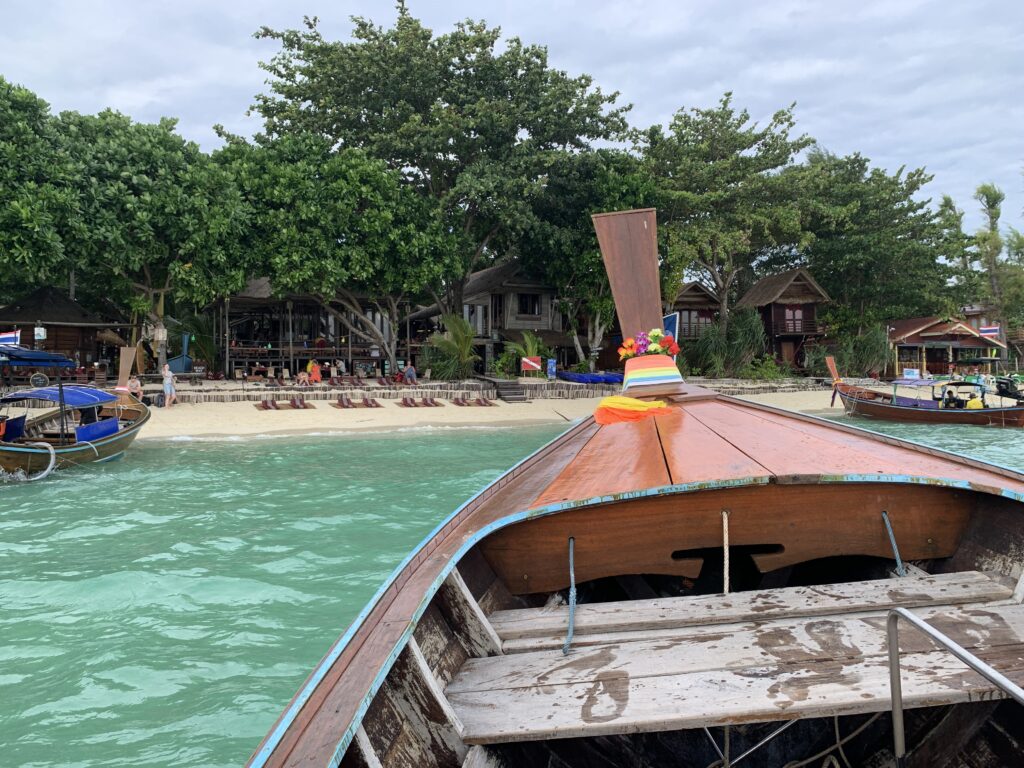
One of the stops, Hin Ngam Island, was covered in smooth striped rocks. Tony immediately pocketed one, but then we saw the sign. I convinced him to leave the rock where he found it.
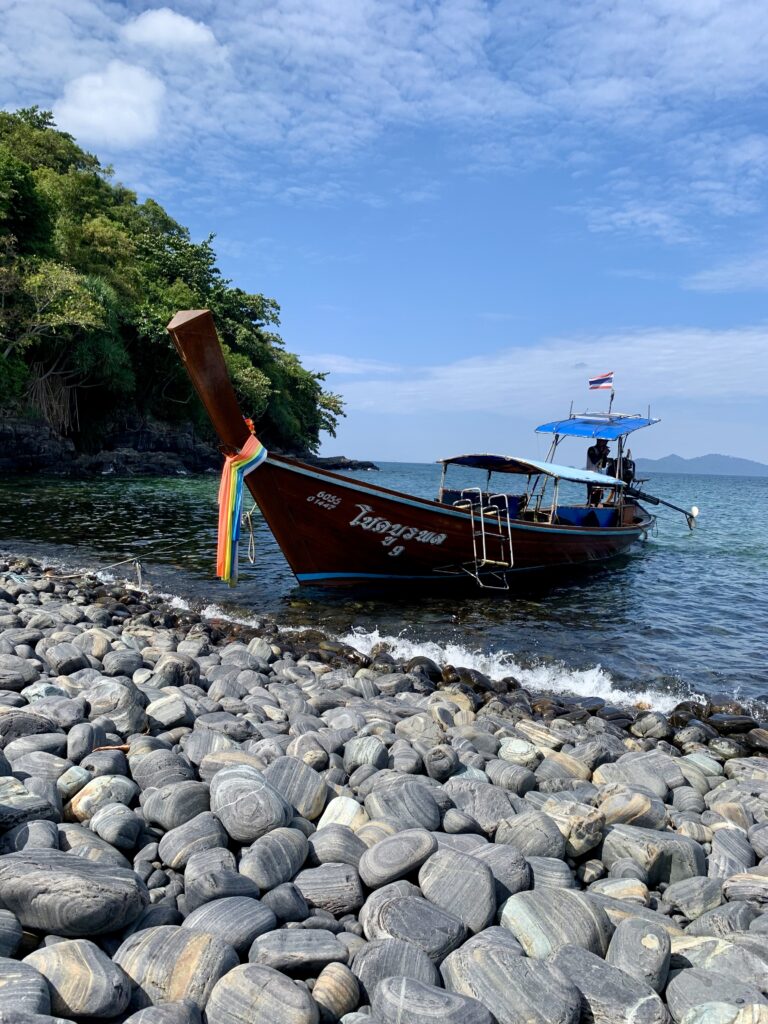
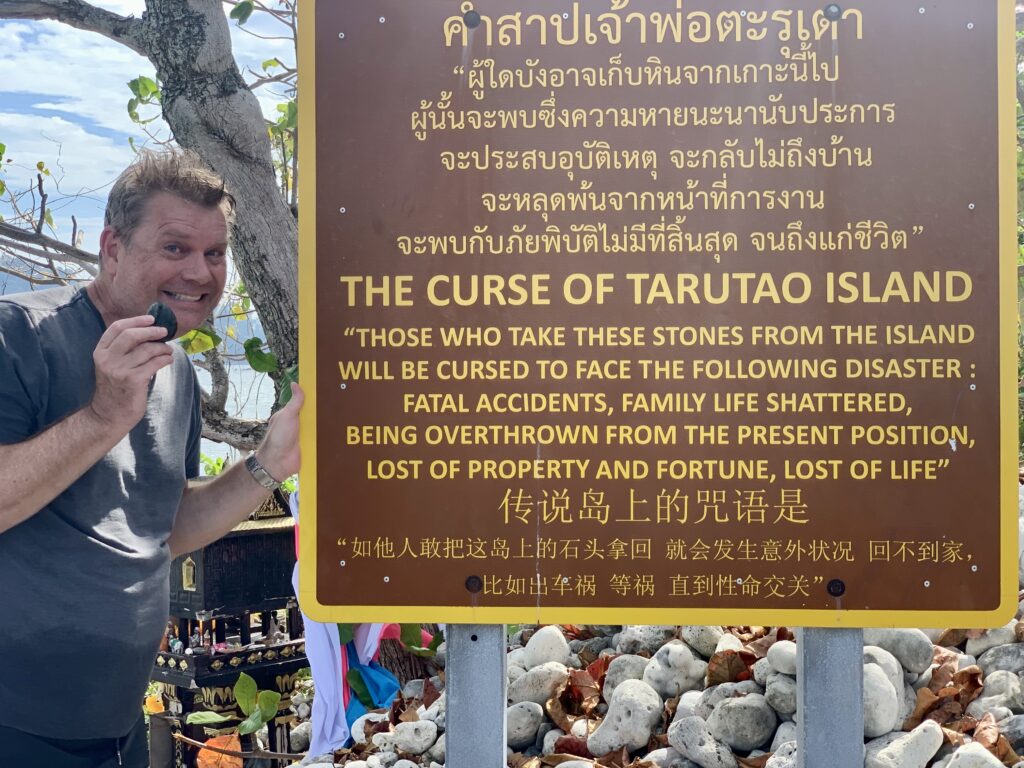
Lunch was included in our day trip, so we stopped at Sai Khao Beach for some fried rice and a swim. Heavenly.
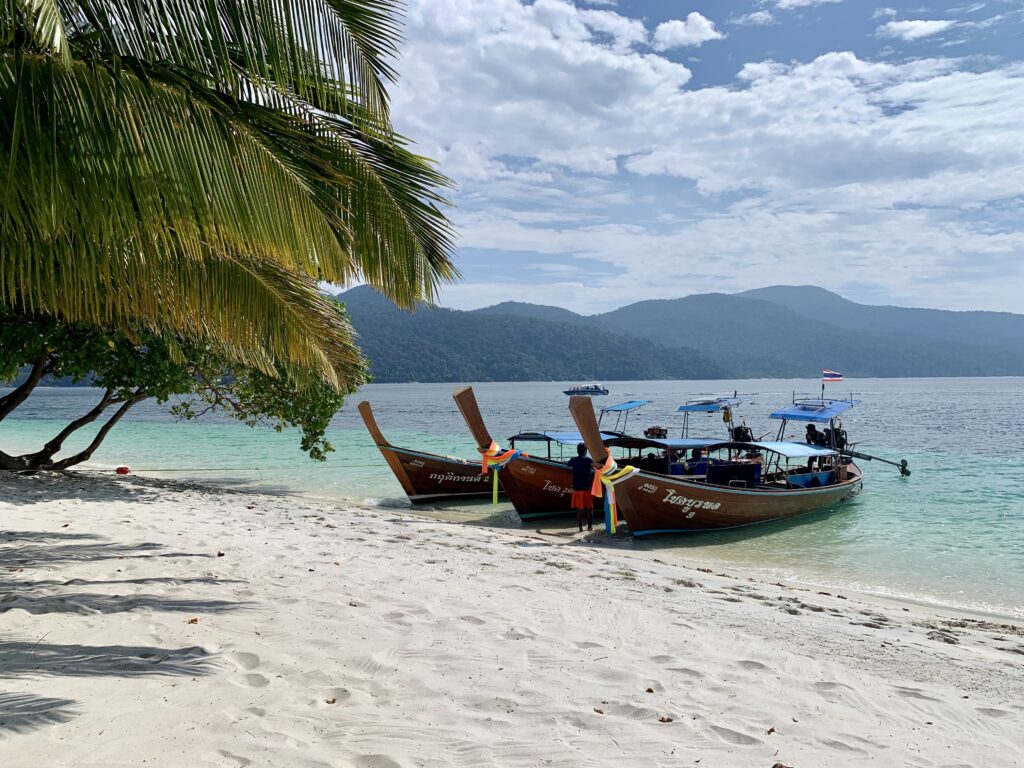
On our last day, I told Tony I wanted to walk the length of our beach, but at the end of Sunrise Beach, we just kept going. Tony was sure we could walk the perimeter of the whole island. It’s only 1.5 miles wide and a little over a mile long, so it seemed doable. At some points, we had to climb over boulders, and once we had to wade waist-deep into the ocean to get around some big rocks. Finally, we hit a wall … literally. A huge wall of rock cut off our trek, so we turned inland and aimed for another beach. By the time we got there, though, we were hot and tired. We abandoned our quest and headed back to our resort for a little pool time. We may not have walked the whole perimeter, but we covered a lot!
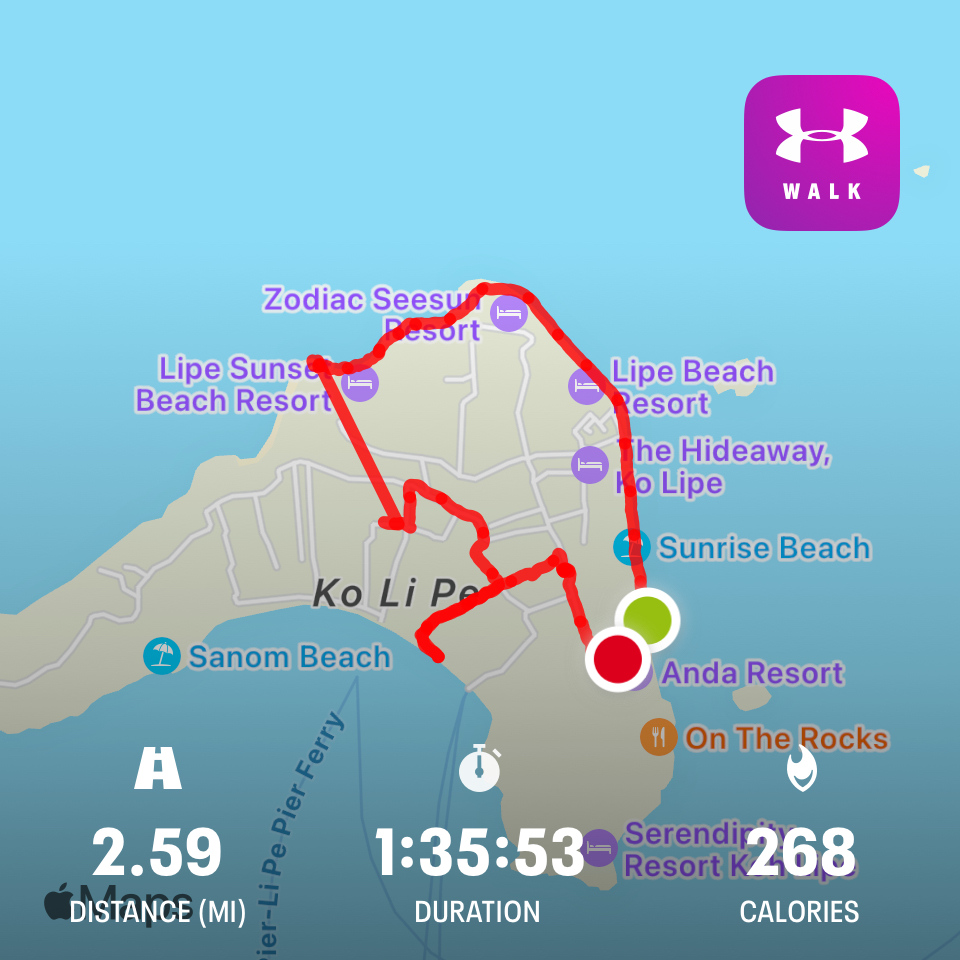
Koh Lipe was not the unspoiled, tranquil getaway we had been expecting. So many people had claimed it was the place to go to escape the crowds. Wrong. Maybe that place doesn’t exist.
Here are some other things that made me a little grouchy:
- Too many long-tail boats docked at the beaches. Who knows what yucky stuff they leak into the water? We had to swim around them, and when walking on the beach, we had to be careful to step over their mooring ropes or risk falling on our faces.
- Way way way too many motorbikes zip through the pedestrian areas. You just can’t let your guard down.
- The skies were overcast and dreary almost the whole week. As the poster child for Seasonal Affective Disorder, I really needed that sun to come out (which it DID on our last day – yay!).
- It was insanely windy on our side of the island. Like, CRAZY windy. You couldn’t sit on a beach lounger and read a book without your bag blowing away.
- The sand at our beach comprised rough tiny pebbles, sharp shards of shells, and broken coral. It was far from the soft baby powder sand promised by bloggers and YouTubers (had they even visited the beach?).
Reading over that list of gripes, I almost deleted it. What a whiny baby, right? Ha! But then again, don’t you hate when people sugarcoat their travel stories and leave out the not-so-perfect parts?
The fact is we had a great time at Koh Lipe. Was it the paradise I had envisioned? No. But that’s OK. Tony and I both find our bliss at the beach, and this was no exception. Would I go back? Probably not, but only because it was a long journey and we have so many fabulous beaches closer to home. Which one should we visit next?

